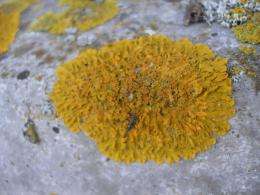The toughest life on Earth

You can freeze it, thaw it, vacuum dry it and expose it to radiation but still life survives. ESA’s research on the International Space Station is giving credibility to theories that life came from outer space – as well as helping to create better suncreams.
In 2008 scientists sent the suitcase-sized Expose-E experiment package to the Space Station filled with organic compounds and living organisms to test their reaction to outer space.
When astronauts venture on a spacewalk, hours are spent preparing protective suits to survive the hostile conditions. No effort was made to protect the bacteria, seeds, lichen and algae attached to the outside of the Space Station, however.
“We are exploring the limits of life,” explains ESA’s René Demets.
Our atmosphere does a wonderful job of protecting life on Earth by absorbing harmful UV rays and keeping temperatures relatively stable.
In contrast, the space samples endured the full power of the Sun’s rays. The samples were insulated somewhat by the Space Station but still had to cope with temperatures changing from –12ºC to +40ºC over 200 times as they orbited Earth.
The samples returned to Earth in 2009 and the results have now been published in a special issue of the Astrobiology journal.
Lichen have proven to be tough cookies – back on Earth, some species continue to grow normally.
René explains, “These organisms go into a dormant state waiting for better conditions to arrive.”
The lichen have attracted interest from cosmetic companies. They can survive the full power of the Sun for 18 months, so knowing more could lead to new ingredients for suncream.
Living organisms surviving in open space supports the idea of ‘panspermia’ – life spreading from one planet to another, or even between solar systems.
It seems possible that organisms could colonise planets by hitching rides on asteroids. ESA is probing this intriguing theory further on future Station missions with different samples.
Journal information: Astrobiology
Provided by European Space Agency




















